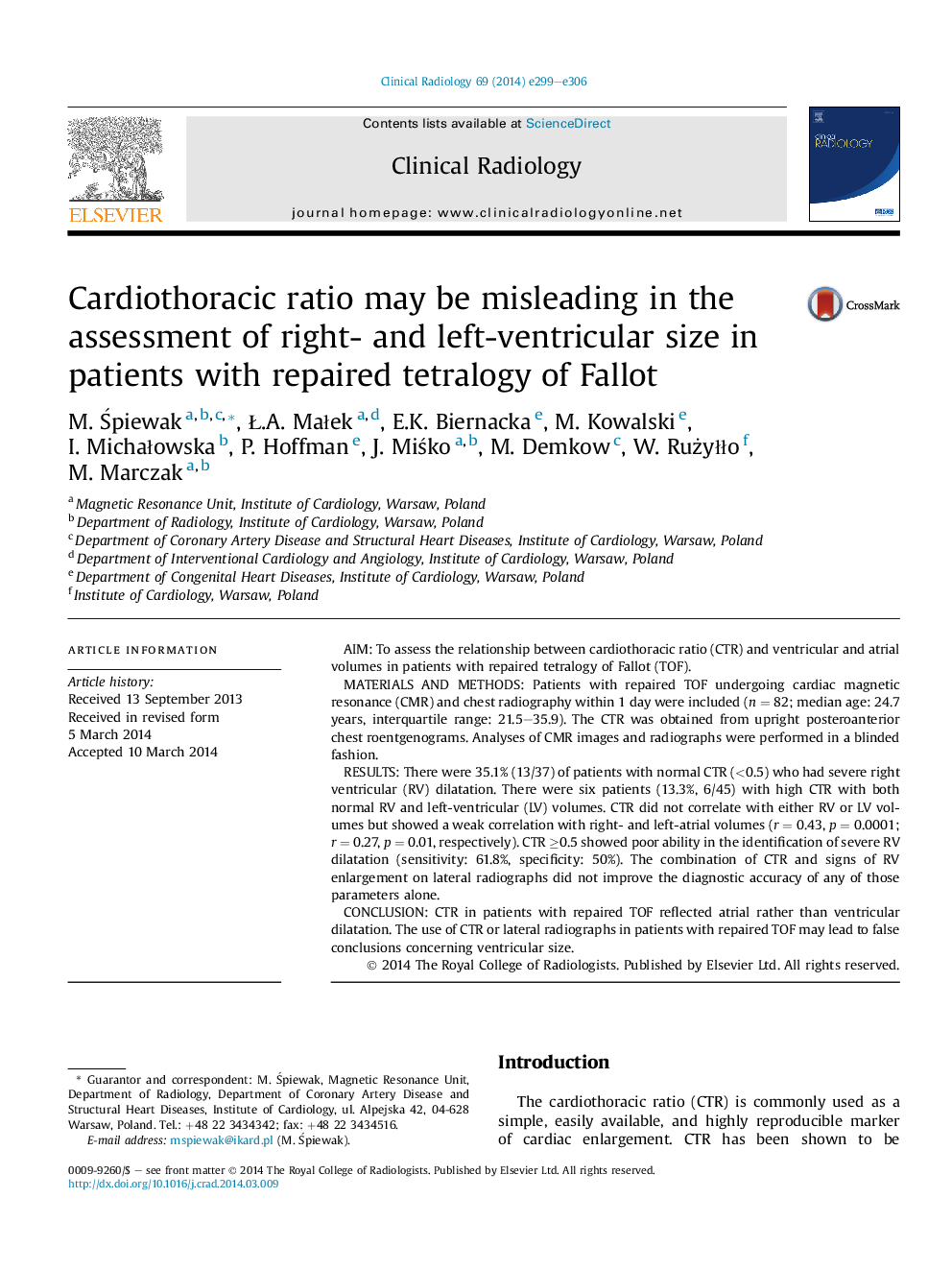| Article ID | Journal | Published Year | Pages | File Type |
|---|---|---|---|---|
| 3981935 | Clinical Radiology | 2014 | 8 Pages |
•Cardiothoracic ratio did not correlate with either right- or left-ventricular volumes.•Cardiothoracic ratio reflected atrial rather than ventricular dilatation.•Normal cardiothoracic ratio did not exclude severe right ventricular dilatation.•Neither RVEF nor LVEF showed correlation with cardiothoracic ratio.
AimTo assess the relationship between cardiothoracic ratio (CTR) and ventricular and atrial volumes in patients with repaired tetralogy of Fallot (TOF).Materials and methodsPatients with repaired TOF undergoing cardiac magnetic resonance (CMR) and chest radiography within 1 day were included (n = 82; median age: 24.7 years, interquartile range: 21.5–35.9). The CTR was obtained from upright posteroanterior chest roentgenograms. Analyses of CMR images and radiographs were performed in a blinded fashion.ResultsThere were 35.1% (13/37) of patients with normal CTR (<0.5) who had severe right ventricular (RV) dilatation. There were six patients (13.3%, 6/45) with high CTR with both normal RV and left-ventricular (LV) volumes. CTR did not correlate with either RV or LV volumes but showed a weak correlation with right- and left-atrial volumes (r = 0.43, p = 0.0001; r = 0.27, p = 0.01, respectively). CTR ≥0.5 showed poor ability in the identification of severe RV dilatation (sensitivity: 61.8%, specificity: 50%). The combination of CTR and signs of RV enlargement on lateral radiographs did not improve the diagnostic accuracy of any of those parameters alone.ConclusionCTR in patients with repaired TOF reflected atrial rather than ventricular dilatation. The use of CTR or lateral radiographs in patients with repaired TOF may lead to false conclusions concerning ventricular size.
